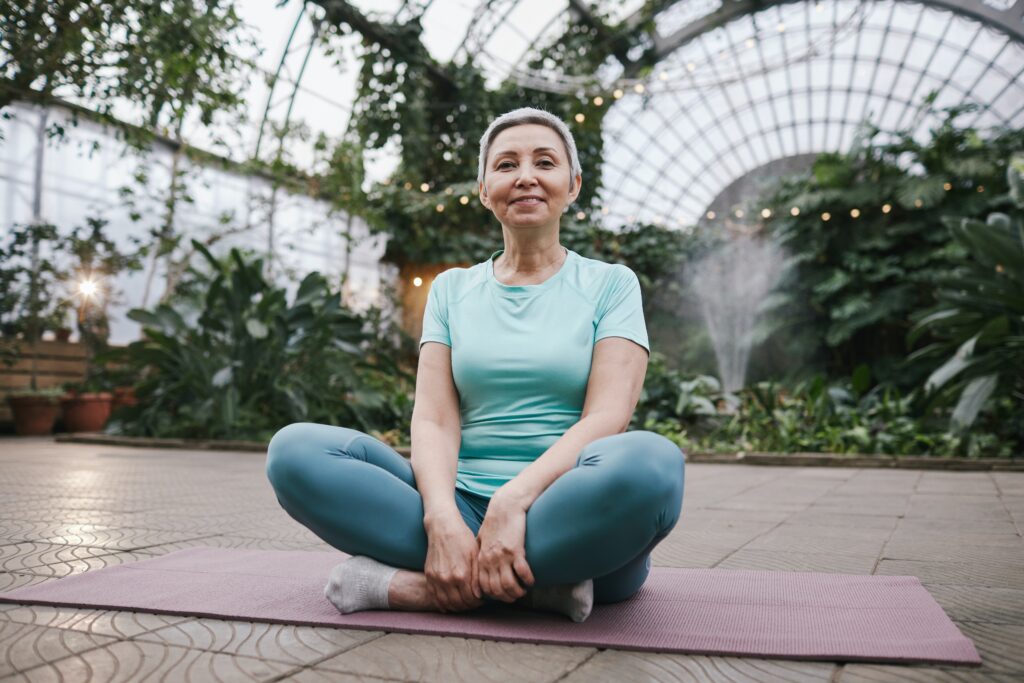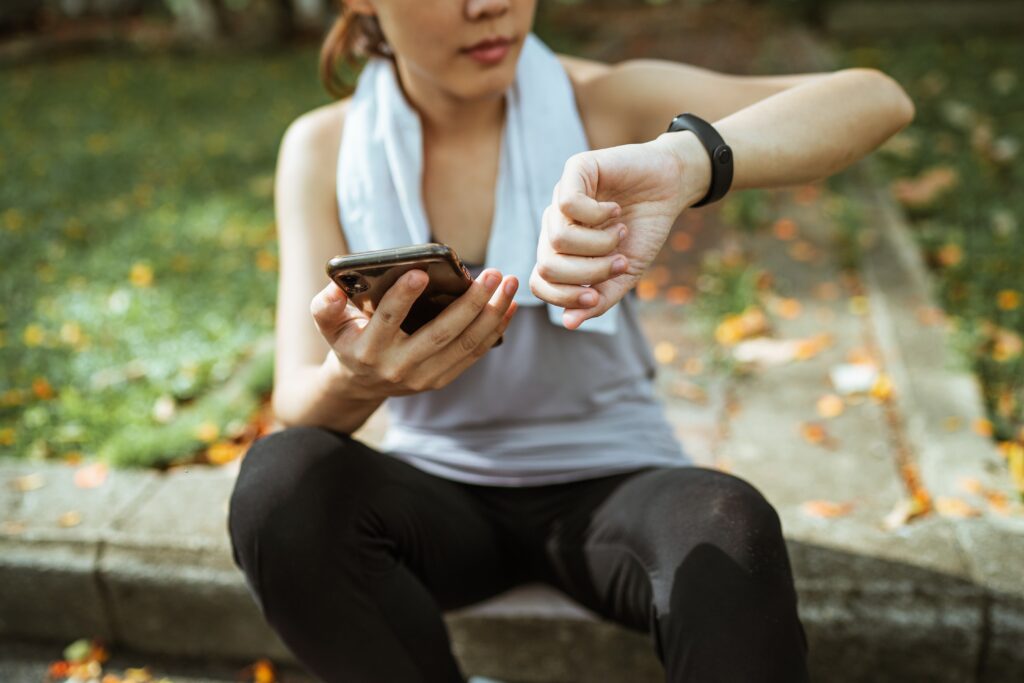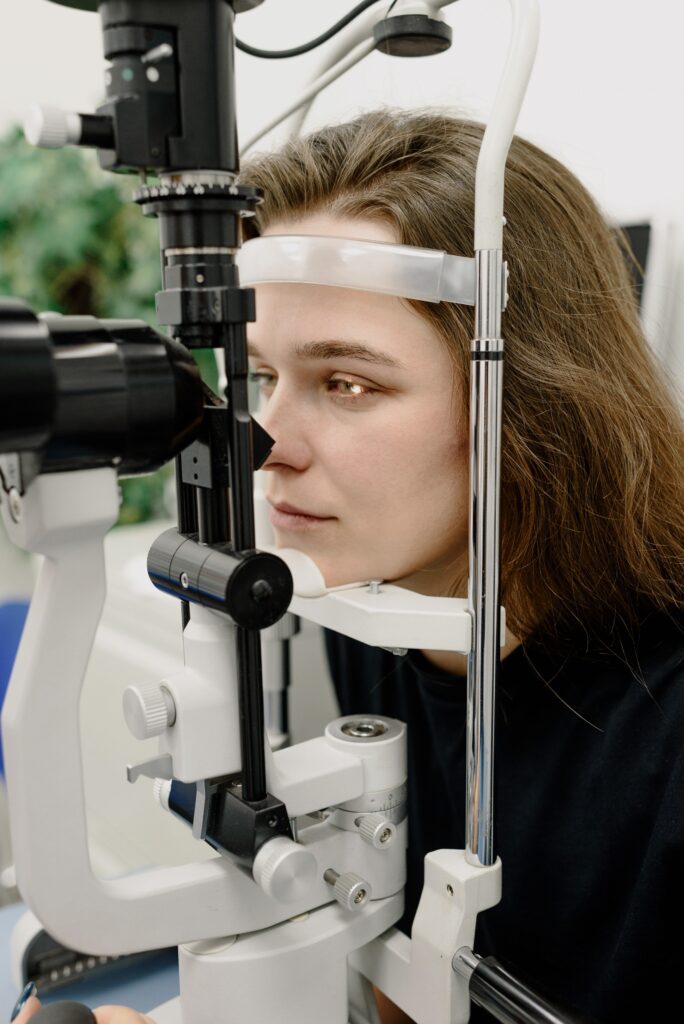6 Tips to Battle Age-Related Vision Changes

It’s no secret. Our eyes change the older we get, making age-related vision changes inevitable. While some changes are subtle and harmless, others can indicate more serious issues.
Presbyopia is one such harmless change that each of us will encounter at some point in our lives. Presbyopia is a change in the focusing ability of our eyes to see up close. Usually, after reaching the age of forty, these changes will begin to manifest. Changes you might notice include adjusting things to see up close or using “reading” glasses.
While presbyopia is one change we can’t avoid, there are several changes we can stay ahead of through lifestyle improvements.
Since there’s no stopping time, our best option is to maintain a healthy lifestyle that also benefits every part of our lives, including our eyes.
Here are 6 habits of a healthy lifestyle that can affect your long-term eye health:

Stay active
Regular exercise is shown to reduce the risk of several age-related eye disorders.
You don’t have to do much, just get yourself moving to start improving your eyes.
Going on walks or for a run, dancing, and biking are just a few fun ideas for how you can improve your eye health!
Wear sunglasses
Harmful UV rays are linked to several age-related eye issues. Direct or indirect, harmful UV exposure adds up over many years and deals heavy damage.
Wearing sunglasses with 100% protection from both UVA and UVB rays is the perfect shield to protect your eye health.
Be sure to wear sunglasses whenever you’re outdoors – on both sunny and overcast days.
Eat greens and other good things
Diet plays a large role in your general health, but it also plays a significant role in the health of your eyes! Having a diet based on whole, healthy foods can improve your vision and help you maintain your eye health.
Essential nutrients like Vitamins A, B, C, beta-carotene, lutein, zeaxanthin, antioxidants, and omega 3 fatty acids are all found in a variety of healthy foods.
If you want these nutrients in your diet – try adding these items to your shopping list:
- Spinach / Kale
- Carrots / Sweet potatoes
- Blueberries
- Eggs
- Salmon / Tuna
- Bell peppers / Broccoli
- Almonds / Walnuts
To get the most out of your diet, you may also want to ask your eye doctor about supplements for specific eye diseases. Adding the right supplement to your healthy diet can increase your long-term eye health.
For example, vitamin C can aid in slowing the progression of cataracts. If you suffer from dry eye syndrome, ask your eye doctor about omega 3 fish oil. And if you’re concerned about macular degeneration, ask your eye doctor if you should try AREDS or Macuhealth supplements.

Avoid Smoking
Smoking is detrimental to the body in many ways. But did you know that it has serious side effects linked to your vision? Smoking can cause dry eye disorder, but it gets much worse. Smoking also increases the risk of cataracts, glaucoma, macular degeneration, and diabetic retinopathy.
Breaking the habit of smoking is one of the hardest things you can do, but the long-term benefits to your health are worth it!
If you’re a smoker and would like to quit, reach out to your primary care doctor or call 1-800-QUIT-NOW. Both resources should provide you with the tools you need to quit smoking and improve your health.

Limit screen time
It’s hard to avoid screens. Most of us spend our workdays staring at a computer monitor and then spend our spare time on digital devices for entertainment. The overabundance of screen time has resulted in many of us suffering from digital eye strain.
Digital eye strain symptoms include:
- Tired eyes
- Neck pain
- Blurry vision
- Light sensitivity
- Headaches
While screens are unavoidable, being proactive in how you interact with them can reduce digital eye strain.
A helpful practice to combat digital eye strain includes the 20-20-20 rule. The rule is simple, for every 20 minutes spent looking at a screen, look at an object 20 feet away for 20 seconds. This is just one easy way to help your eyes relax throughout the day.
In addition to the 20-20-20 rule, you can wear blue-light filtering lenses and switch your phone to dark mode to reduce screen brightness.

Visit your eye doctor annually
While a healthy lifestyle will go far in protecting your eyesight, subtle changes can still go unnoticed.
It’s crucial to visit your eye doctor yearly to have the health of your eyes evaluated. Using a special scope, the doctor will scan your eyes for signs of glaucoma, macular degeneration, cataracts, and more.
For the earliest detection and prevention, you can elect to have your eye doctor perform an iWellness scan.
An iWellness scan evaluates your eyes and detects eye disorders before they cause damage. In fact, iWellness scans pick up retinal changes that would take at least 5 years to be visible to doctors through a regular dilated eye exam!
While an iWellness scan takes images similar to an MRI it doesn’t use radiation. The scan only takes a minute to complete and the doctor will review the results with you during your eye exam!
We can’t stop time, but we can control how we let it affects us.
Living a healthy lifestyle is the key to the long-term maintenance of your eyesight.
Schedule today and request your iWellness scan to move forward into your eye-healthy lifestyle!


